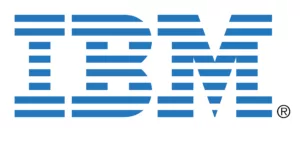This week IBM announced their latest Power 10 servers, and they are impressive. They mostly appeal to existing Power users and they represent a level of vertical integration that is currently only matched by Apple which struggled with its own server offerings through the first part of the century. The issues IBM has with expanding the Power line of servers are consistent with any company trying to build outside of existing processor standards which are largely driven by the market’s component approach to the problem (using firms that specialize on certain components like processors instead of building them yourself).
IBM’s approach has been significantly more successful than Apple’s failed attempt, and I’d like to explore that this week.
When I first met the Apple server
Counter to company policy, I volunteered as an advisor to Apple after Steve Jobs took the company back over. On my last meeting with the company (which is why I remember it so clearly) they were very proud of two things: they were planning to implement a command line interface to the MacOS for users and to their own line of servers. I wasn’t a fan of either move and argued that Apple’s strength was in their GUI, not command line interfaces, and that were they to push that interface hard, Microsoft was likely to point out that they’d done it longer and better, causing users to consider abandoning the company at an even higher rate (at the time they were bleeding market share).
As for servers, I argued that Apple didn’t have the brand for servers and would either need to create a sub-brand for servers that had no relationship to its consumer business or spin out a unit with its own identity to go after business buyers. My bridge-too-far was telling them they needed to pay Gartner a lot of money to take them seriously as a server vendor. Otherwise, it would never get the coverage it needed to grow the business. Even though I didn’t work for Gartner, Apple interpreted that as blackmail, and I was banned from working with Apple anymore.
Apple didn’t play up the command line interface, but it also didn’t take my advice on its servers. That business failed several years later.
IBM vs. Apple
With Power, IBM has many of the same problems that Apple had in that IBM’s technology is unique, it is vertically integrated and it is fighting through majority market ownership by AMD and Intel in this market. But IBM has an enterprise brand, not a consumer brand, it has enterprise sales capability and it’s seriously considered to be a server vendor by companies like Gartner that cover the segment.
These capabilities are what Apple lacked and IBM’s ability to continue to not only play in this segment but grow its market, against Apple’s failure, showcases that to build and sell alternative servers (to X86), you need the proper sales and support capabilities coupled with a brand that is consistent with business rather than consumer sales.
IBM can do this while Apple cannot. While IBM would, and has, underperformed with consumer products, that same limitation turns into an asset when it comes to business, and especially enterprise sales.
While I’d hoped that Apple and IBM would turn into great partners with each company addressing the shortcomings of the other, that simply was not to be, not because IBM can’t partner (it is one of the best at partnering), but because Apple just doesn’t get partnerships and refused to design and build PCs that IBM’s channel could sell. Ironically, IBM likely could have successfully sold Apple’s servers.
Wrapping up:
IBM’s similar server success is a sharp counterpoint to Apple’s server failure, showcasing the need, when going into any market, for a brand that market will accept, an offering uniquely designed for that market and a sales and service organization focused on that market. Apple did create a uniquely designed server but missed every other requirement while IBM didn’t take that list of requirements as options and executed on all of them. The result is that IBM Power servers are growing in a market dominated by another technology while Apple struggled for relevance and eventually failed.
This still showcases that should both companies partner well, they could expand their presence significantly but, like any partnership, one partner can’t carry all the load. Until Apple is willing to do its part, any subsequent partnership is likely to fail.
Put more simply, IBM succeeds because it’s IBM. Apple failed because it wasn’t willing to become a company like IBM to serve a market that required an IBM-like provider.








